A Bold Path Etched in DNA
Pharmaceutical Executive
Markus Warmuth, CEO of cancer genomics company H3 Biomedicine, speaks with Pharm Exec about being part of a new wave of biotech business leaders, who let the science chart the course.
Forever rooted in drug discovery-with successes and new hills to climb-Markus Warmuth, CEO of cancer genomics company H3 Biomedicine, fits the profile of today’s new breed of biotech business leaders, who let the science chart the course, where knowledge is currency
Though it may sound cliché, Dr. Markus Warmuth, a trained scientist in internal medicine and oncology, is used to the long journeys-the twists and turns and uphill battles-that come with drug discovery and forging paths for promising biomedical ideas to advance. In fact, he’s lived them in many ways. When the native German and former academic oncologist and investigator supplanted his family from Munich to San Diego, Calif., in 2002, moving into their new house the day before Halloween, “we were all confused,” Warmuth recalls, “because there were a ton of people knocking on our door asking for sweets and we had no idea what was going on!”
But like drug discovery itself, adapting to change and uncertainty is a must in his profession, Warmuth says, the 2002 move specifically bringing the cancer researcher to the Genomics Institute of the Novartis Research Foundation (GNF), where he headed up its kinase platform and oncology pharmacology program. Warmuth has lived in the US ever since, eventually switching coasts, where today he is a combination
Markus Warmuth, president and CEO, H3 Biomedicine
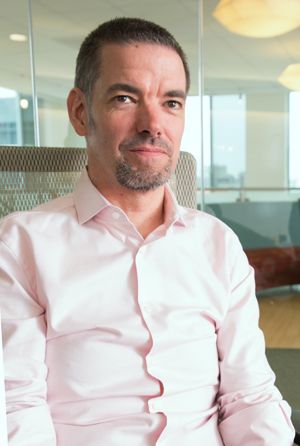
business leader and scientist. Perhaps it’s no surprise that Warmuth is also an avid cyclist, enjoying the thrill of challenging mountain paths-even venturing to the Alps and taking on the same tough climbs as those in the Tour de France.
Whether in a figurative or practical context, having traversed such diverse trails in his career and life has many pointing to Warmuth, now the CEO of H3 Biomedicine, an early clinical-stage cancer genomics company, as being part of a new wave of biotech leaders. They are those that let the science lead the way while marrying that knowledge with an astute understanding of business. The science, in this case, is H3’s precision oncology approach to drug discovery. It focuses on identifying therapeutic targets and biomarkers based on genetic aberrations identified in patient samples catalogued in the company’s data science platform, which consists of cancer genomic data from greater than 100,000 patients. The Cambridge, Mass.-based company, which formed in 2011 as a wholly owned subsidiary of Eisai, the Japanese big pharma organization, specializes in tracking the role of changes in DNA that contribute to cancer and influence various hallmarks of the disease. Although H3 works on a diverse set of targets, a particular strategic focus area is on alterations in the RNA splicing machinery, which are critical to translate genes to functional proteins.
Warmuth joined H3 a few months after its launch as chief scientific officer and was named president and CEO that same year. Under his leadership, H3 has built an integrated discovery/development platform that identifies genetic targets that define specific patient populations, and validates those targets with the hopes of delivering genomics-based small molecule drugs or antibody drug conjugates.
The company has advanced three projects into early-phase clinical trials, including H3B-8800, a splice modulator that received orphan drug designation from the FDA last year for the treatment of acute myelogenous leukemia and chronic myelomonocytic leukemia. H3 also has multiple discovery programs in the works.
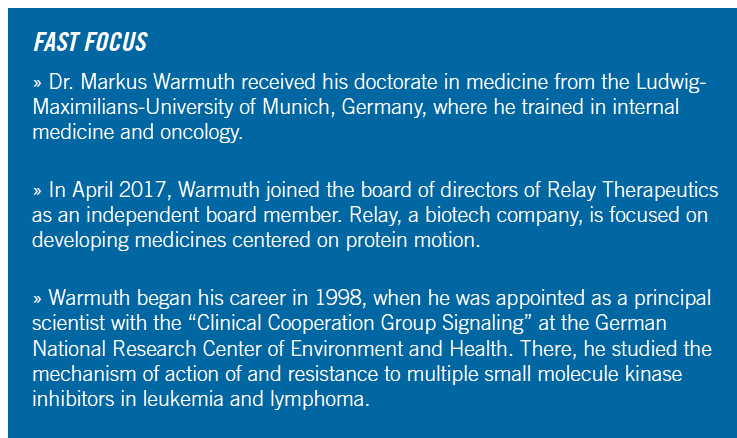
On the business end, Warmuth has helped strike research partnerships with Horizon Discovery, Selvita, Sage Bionetworks, and, most recently, Foundation Medicine, the cancer diagnostics company. Before joining H3, Warmuth was head of oncology drug discovery for the Novartis Institutes for Biomedical Research (NIBR), where he oversaw a significant portion of NIBR’s oncology R&D portfolio, including novel therapies that have since won commercial approval.
The Boston-area resident spoke recently with Pharm Exec about, among other things, his career journey, the biotech culture differentiator, and the revolution and continued cautions in cancer genomics.
PE: What drove you to follow the arc from science and research to the business side of medicine and the life sciences?
WARMUTH: Honestly, I’m not a person who spent a lot of time planning out a career. I’m not doing things because they look great on the CV. For me, having worked at Novartis for nine years, I felt that was great training grounds, but I also saw a lot of the other side. Huge organizations, lots of stakeholders; it can take a
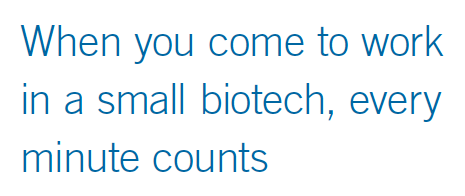
long time to get to decisions. So, after a while, naturally I was interested to take on a position beyond just sort of owning and driving the science; I could really impact the entire business.
When you come to work in a small biotech, every minute counts. One small mistake, one bad decision really impacts the value of the company. I was interested in being at the helm of a company and implementing some of my philosophy around how to drive drug discovery, how to grow a business, and how to have impact on patients in the future.
PE: While you were with Novartis, the field of cancer genomics was starting to make significant strides. How unique was it to have that vantage point and watch the field emerge almost in sync with your career progression?
WARMUTH: That really influenced me and my thinking. That’s not to say that there aren’t other areas. Obviously, in immuno-oncology, we see it having revolutionized over the last four or five years. I believe in a strong connection between cancer genetics and immuno-oncology. We do work on some of these aspects here at H3.
Clearly, we have now seen how rational drug development around genomic aberrations can really drive impact on patients and also value for a company. There’s been a lot of learnings over the past seven years around changes to the cancer genome. Before we started H3, my belief then was it’s mostly around making cancer cells grow faster and survive longer. Now, I realize that changes to the cancer genome really do impact all aspects of cancer. One of these aspects is escape from the immune system. We recently published a story in Nature Communications around a series of mutations in bladder cancer that are clearly linked to modulating the level of T-cell infiltrates in tumors of bladder cancer patients. For us, that’s really been the big grind.
PE: Given that honed-in focus, what is distinctive about the culture of H3?
WARMUTH: My philosophy is clear and it’s really that the scientists, the teams need to own the programs. The culture we’ve established here is around what we like to call “empowered teams.” There’s no leadership committee. We have leadership teams, but project teams usually don’t come to a leadership team at H3 to ask for approval to do an experiment or to move a project to the next stage. That’s something we try to drive in a very dynamic way, by being confident in the actions of the project teams and project team scientists.
That’s the underlying philosophy that has allowed us to build what we have in the past seven years. In recognizable speed, we’ve brought three assets into clinical trials. And none of these were in-licensed-this was all science we had built from the ground up. It goes back to the empowerment of your project teams. The larger the organization, the harder it is to stay true to that philosophy. It really requires you to remind yourself every day when you come to work that this company is about empowered teams and not to deviate from that philosophy.
PE: How have personal connections or mentors from your past contributed to your ability to instill that mindset today?
WARMUTH: I was fortunate enough to work with great bosses and mentors who were never afraid of what I would be doing next. At GNF, I had a lot of support from Pete Shultz, who, back then, was the Institute’s director. What I truly learned from him was to be open-minded and really support young, dynamic investigators with sometimes crazy ideas. When I came to GNF, I had very little experience in drug discovery. Within a few months, Pete essentially gave me responsibility to build and drive the ALK [oncogene] program [in non–small cell lung cancer].
The same is true with my boss later at Novartis, Bill Sellers (former VP/global head of oncology, NIBR). He brought me over from GNF, really stepping aside and giving me the room to grow and build a group that was able to shape the future portfolio of his group. That’s really important for us as leaders. As much as we would like to drive and dominate, we can’t be successful if we’re not finding the next talent and empowering these individuals to own certain areas.
PE: What’s one way the industry has changed since you entered the pharma space?
WARMUTH: The one thing to mention-and it’s probably partly due to a lot more success stories-is the industry’s become very competitive. And that’s not to say competition is meant to be negative. It’s great to see how much more is going on, especially in oncology drug discovery-how much more impact there has been on patients and their lives and how much more there is to come. Of course, it makes it harder and harder for companies to differentiate themselves and find their own space. And it also bears risk, because we are seeing, in my eyes, some of it around immuno-oncology and combination treatments. I do think [the heavy competition] runs the risk of companies prematurely entering into development programs because they feel practical, without really having solid underlying data to support them.
PE: Is there, in a sense, too much volume, as far as projects and clinical assets in some areas?
WARMUTH: Yes. In a way, it crosses a “me-too” [drug] kind of behavior, where you’re starting to see a lot of the same assets being developed-and it’s hard to understand the difference that you can still make if you’re the fifth or sixth entrant in a particular class.
I am concerned that with some of the increased spend-exciting as it is in this area-if the success stories are not holding up the dollars spent, then it can impact future investments. You really have to carefully
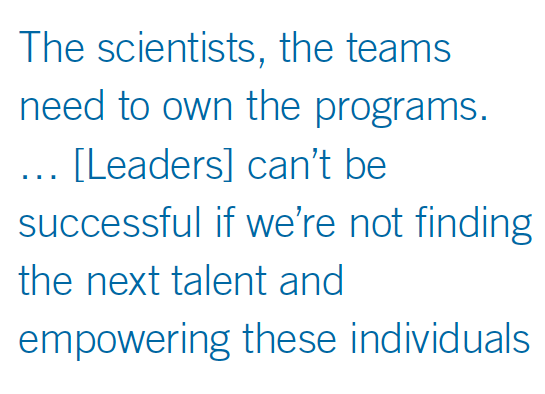
monitor all of this. That’s every CEO’s responsibility. As much as we obviously want to deliver back return on investment to our investors, we also need to be careful and thorough and not push too much into an area or a registration or program just because we feel we need to justify valuations and investments. It really is important to stay true to data-driven decision-making.
PE: How do those factors influence the way your company operates?
WARMUTH: For us, it’s trying to be unique and differentiate what we’re doing. Sometimes it’s the uniqueness of the target, sometimes it’s the uniqueness of a mechanism of action. One of the best examples for that is our program targeting estrogen receptor, which is a very well-known target. When we started this, it was really driven by the discovery of hot-spot mutations in the estrogen receptor in a subset of breast cancer patients. We had a long debate about whether we should even enter into that space, because it’s very crowded. A few years back, there was a lot of hype around the next generation estrogen receptor degraders. After quite some debate and scientific discussions, we realized we had another potential mode of action that hasn’t been explored yet, which is covalent antagonist of the estrogen receptor. While crowded, we felt that would probably be a way to differentiate, and some of our early data supported that.
That program (H3B-6545) is in a Phase I trial. It’s too early to talk about any of the data, but all the preclinical data we have in hand very nicely distinguishes that molecule from standard of care molecules and that class of next-generation estrogen receptor degraders.
I’d rather be in a niche and different versus being the fifth in class in a broader indication. For small companies, that’s extremely important.
PE: What in your career to date has made you most proud?
WARMUTH: Obviously, with everyone who works in drug discovery-and it doesn’t matter if that’s on the biology side, chemistry, in management, finances, legal, whatever-whenever you are involved in a drug that eventually makes it to the market and you see how it impacts patients, it makes you feel very proud. And it almost doesn’t matter how much you contributed. For me, the moment when ceritinib (Zykadia) got approved (in 2014 for patients with Crizotinib-resistant ALK-positive NSCLC)-I was no longer with Novartis at the point-six, seven, eight years of really hard work all of a sudden made a ton of sense.
One of the molecules I was involved in when I came over to join Novartis in Cambridge was ribociclib (Kisqali). Seeing that approved now in breast cancer (cleared in the US and Europe last year) makes me feel really proud too. There were hundreds of people involved to eventually make that happen. One of the big learnings for anyone in this industry is it takes a huge team and tremendous effort from a lot of people to get the job done.
The other thing that makes me proud is really to see-and even where I’m still relatively young in my career-how some of the folks and scientists that have worked for me have grown and are now CSOs and COOs on their own. For me, as a manager, that’s really important. Because, again, everyone wants to have a career and be successful. But it’s really also about growing up the next generation of leaders.
PE: What are some challenges in your focus area of cancer genomics that keep you up at night?
WARMUTH: When we started H3 around this paradigm of cancer genetics, when the Cancer Genome Atlas released its first data set, very quickly it became clear that it was different from what we expected. There wasn’t really this next super obvious oncogenic driver. We knew PI3 kinase mutations and Ras mutations from before. I think there was a clear expectation that we would find many more of these in large-scale genomic efforts, but we really didn’t. As a matter of fact, what we found was mutations in the splicing machinery, and no one really understood what that meant and what these mutations would be doing. We found mutations in metabolic pathways that before were worked on for diabetes and other areas.
So, it was really sort of grappling with the fact that that quick path that everyone had expected to novel therapies might not be so quick after all. We had to react to that by building an infrastructure that could give us deeper and broader insights into how the cancer genome changes, but then also to interpret what these changes actually mean, not just for proliferation and survival of the cancer cells but for differentiation, migration, escape of the immune system, and almost any hallmark of cancer.
PE: What would be your advice to new professionals entering this industry-particularly your specialty field?
WARMUTH: For me, what’s really worked is don’t plan too much, don’t be too plotting, and as a matter of fact, be ready to change dramatically if you need to. About a year before I moved my family from Germany to San Diego, I didn’t think I’d ever move to the US. Then a year later, I did. Because I realized this is where innovation lives.
I think sometimes you just need to follow the flow of your life instead of trying to influence it too much. I think the same is actually true for how you grow a company. We started out seven years ago in a fairly unique setup, where instead of being formed out of an academic group and with venture capital, we started up as a spinout from Eisai. We are still organized as a wholly owned subsidiary. While some might still think that’s not such a good idea, I would say we probably wouldn’t be where we are right now if it wasn’t for Eisai and their bold investment.
Looking at the future, I do think there’s opportunities to change the business model and certainly my goal is to continue to grow H3 Biomedicine into a brand that’s really recognized for the innovative science it’s doing and innovative drugs it’s generating, and potentially also at some point into a standalone company.
PE: Can you elaborate more on H3’s relationship with Eisai and what makes your funding model unique?
WARMUTH: One of the main advantages of that setup was our ability to access key resources from Eisai. There’s something to be said about the experience of big pharma companies. When we started H3, it was on a bold investment thesis that Eisai, instead of spending money internally, wanted to fund and build a biotech-like company-high energy, entrepreneurial spirit, and in the premier biotech hub in the world. And
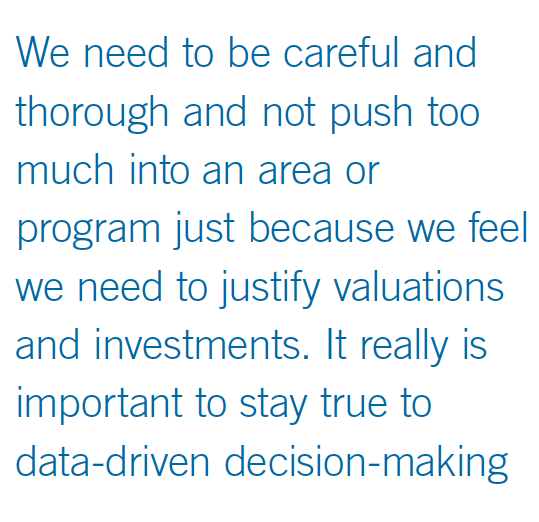
give it its own identity, its own culture, but allow it to collaborate and benefit from the decades of experience that Eisai has in its own organization.
When we started, to support us, Eisai did commit to $200 million in startup funding and then additional funds coming in as we improve ourselves and hit certain milestones. Up until now, Eisai has continued to fund us, but there’s certainly also recognition that if we, as H3, wanted to continue to grow and really leverage the platform that we have built, that we should actually go more outside and have collaborations with other companies and also maybe transition into a model that would allow us to accept outside funding.
PE: One of your collaborations is with Foundation Medicine. How has that progressed?
WARMUTH: It’s been extremely fruitful. It’s an agreement that allows us to access Foundation’s genomic data, which has now grown to over 100,000 patients, and some of its scientific expertise. It’s really interesting, there’s been a lot of debate around how many genomes you need to sequence at what depth in order to have enough information. The information we can derive from accessing Foundation’s data is quite stunning and has led to new projects, but really also greatly informed the clinical path for some of the existing assets, and seeing genomic changes with a lot more granularity and at bigger depths and more longitudinal clearly helps.
PE: You’re a pretty hardcore cyclist in your spare time. How much does your professional life define your personal identity and your drive to achieve?
WARMUTH: [Cycling] is a bit like drug discovery. You’re in there, and it depends on where you ride. I do like to ride in the Alps. When you start at the bottom, you know you’re in there for at least an hour, sometimes two and a half hours-and you’re still just getting into it. I think it’s like drug discovery. You know when you start a project, you’re probably in there for 10 years-plus, if it’s successful. You know you’ll have a lot more gray hair by the time you come out at the top. But if it’s successful and you do see that it impacts patients’ lives, it’s absolutely worth it. And just to be able to go up these mountains, because the view from the top is really spectacular.
Michael Christel is Pharm Exec’s Managing Editor. He can be reached at michael.christel@ubm.com
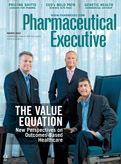
Reshema Kemps-Polanco: Taking Risks for Greater Reward
May 14th 2025Reshema Kemps-Polanco, executive VP and chief commercial officer, Novartis US, and the 2025 Healthcare Businesswomen’s Association Woman of the Year, uses the lessons she learned from her family to bring out the best in her teams.